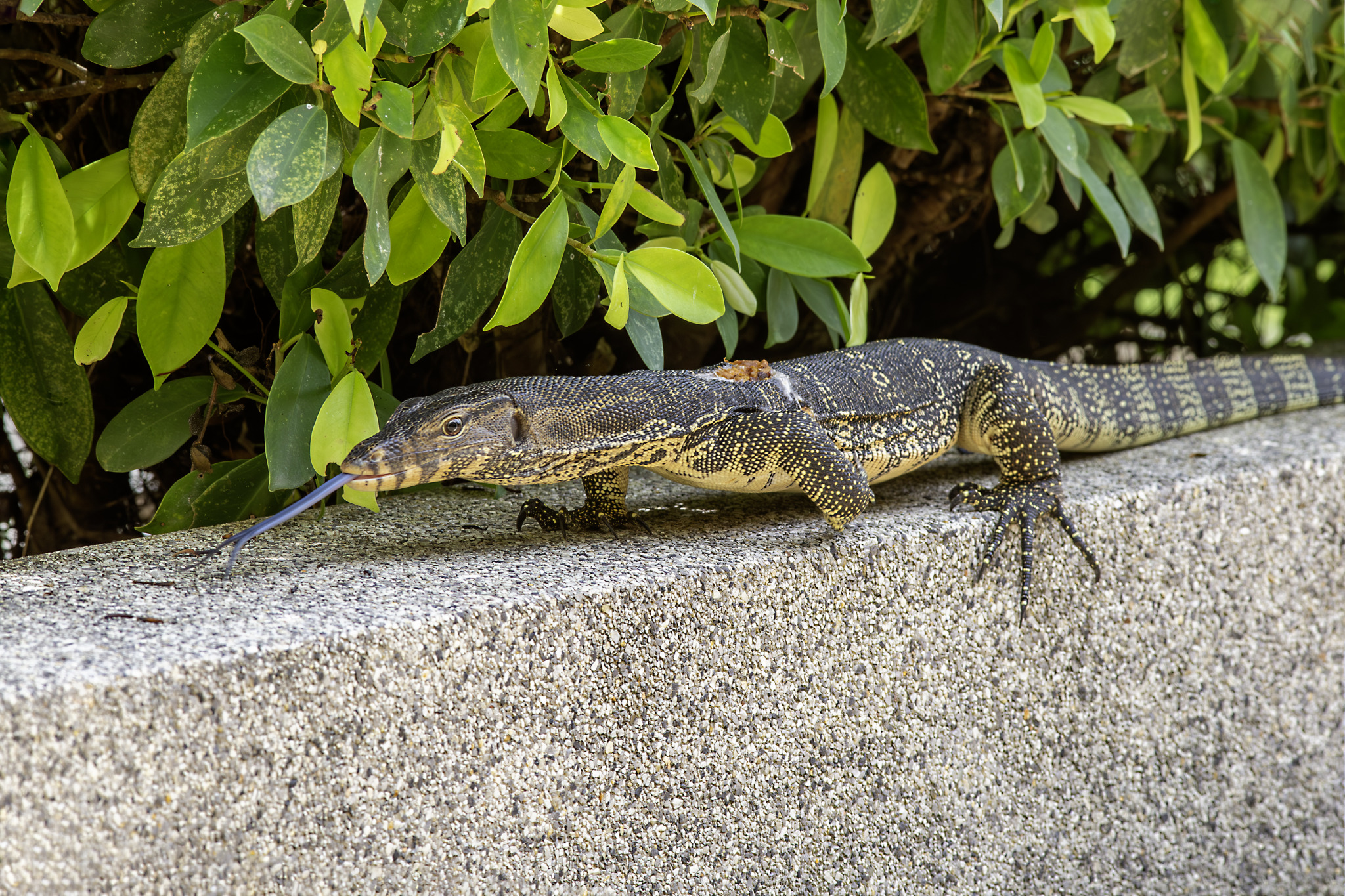Here’s a full natural history overview of the Asian Water Monitor (Varanus salvator), one of Asia’s most impressive and adaptable reptiles. 🦎🌏
🐊 Asian Water Monitor (Varanus salvator)
Family: Varanidae
Genus: Varanus
Common names: Asian Water Monitor, Malayan Water Monitor
🌍 General Overview
The Asian Water Monitor (Varanus salvator) is one of the largest lizard species in the world, surpassed only by the Komodo dragon.
It is a highly adaptable, semi-aquatic reptile that thrives across South and Southeast Asia, inhabiting wetlands, mangroves, riversides, and urban canals.
Known for its strength, intelligence, and swimming ability, this monitor plays an important ecological role as both predator and scavenger, helping to keep its environment clean.
🧬 Identification
| Feature | Description |
|---|---|
| Length: | Typically 1.5–2.5 m (exceptionally up to 3 m) |
| Weight: | 20–50 kg (large individuals can exceed 70 kg) |
| Coloration: | Dark brown to black with yellow spots or bands, especially on young individuals |
| Head: | Long, pointed snout with forked tongue and sharp teeth |
| Body: | Muscular and streamlined; skin covered in small, keeled scales |
| Tail: | Very long, laterally compressed — aids in swimming |
| Limbs: | Strong, with sharp claws for climbing and digging |
🆔 Key ID features:
- Long, powerful tail used like an oar
- Forked tongue resembling that of snakes
- Yellow-banded juvenile pattern fading with age
🌿 Behavior and Ecology
- Activity: Diurnal (active during the day)
- Habitat preference: Found near water bodies — rivers, lakes, swamps, mangroves, and rice paddies
- Diet: Opportunistic carnivore and scavenger — eats fish, frogs, crabs, snakes, birds, eggs, small mammals, and carrion
- Swimming: Excellent swimmer; can stay underwater for up to 30 minutes
- Climbing: Juveniles often climb trees for safety
- Defensive behavior: When threatened, it hisses, inflates its body, lashes with its tail, and may bite
🪺 Reproduction and Life Cycle
| Stage | Description |
|---|---|
| Breeding season: | Usually during the rainy season |
| Mating behavior: | Males compete for females using body wrestling and scent tracking |
| Egg laying: | Females lay 15–30 eggs in burrows, termite mounds, or decaying vegetation |
| Incubation period: | About 6–8 months depending on temperature |
| Hatchlings: | 25–30 cm long; brightly colored and fully independent |
| Maturity: | Reached around 2–3 years of age |
🧠 Lifespan:
Typically 10–15 years in the wild, up to 25 years in captivity.
🌲 Habitat
- Found in a wide variety of wet, tropical, and subtropical environments, including:
- Rainforests
- Swamps and riverbanks
- Coastal mangroves
- Agricultural and urban areas
- Often seen basking on riverbanks or swimming through canals, even in major cities such as Bangkok and Kuala Lumpur.
🧭 Distribution
- Native range:
South and Southeast Asia — from Sri Lanka and India eastward through Bangladesh, Myanmar, Thailand, Laos, Cambodia, Vietnam, Malaysia, Indonesia, and the Philippines. - Subspecies: Several regional forms exist, including V. s. salvator (Sri Lanka) and V. s. macromaculatus (mainland SE Asia).
- Habitat elevation: From sea level up to 1,000 m in hilly forest regions.
📉 Conservation Status
| Category | Details |
|---|---|
| IUCN Red List: | Least Concern |
| Population trend: | Stable across most of its range |
| Threats: | Habitat destruction, hunting for meat, skin trade, and persecution |
| Conservation measures: | Protected under CITES Appendix II; locally protected in some countries |
| Adaptability: | Highly resilient and common even in disturbed or urban habitats |
🧠 Interesting Facts
- The second-largest lizard species in the world, after the Komodo dragon.
- Known to swim across sea channels, contributing to its wide island distribution.
- Possesses forked tongues and Jacobson’s organs, allowing a sense of smell similar to snakes.
- Plays a role in controlling rodent populations in urban environments.
- Despite their size and appearance, they rarely attack humans unless provoked.
📊 Summary Table
| Trait | Description |
|---|---|
| Scientific name | Varanus salvator |
| Common name | Asian Water Monitor |
| Family | Varanidae |
| Length | Up to 3 m |
| Weight | Up to 70 kg |
| Diet | Carnivorous (fish, carrion, small animals) |
| Habitat | Wetlands, riversides, mangroves, urban waterways |
| Distribution | South and Southeast Asia |
| Status | Least Concern |
| Behavior | Semi-aquatic, strong swimmer, territorial |
Views: 1173
Subscribe to the newsletter:
